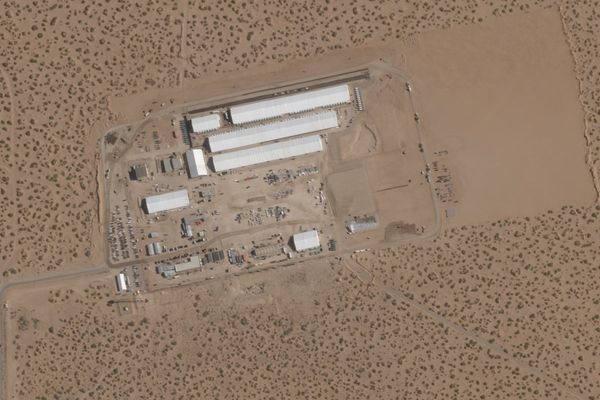Pomp, circumstance and tradition will feature extensively in the formalities to be held in the following days as final preparations are made for the state funeral of the late Queen Elizabeth II.
After arriving in London from Edinburgh on Tuesday evening on a Royal Air Force aircraft, the oak wood coffin carrying the body of the monarch was transported by hearse to Buckingham Palace in central London.
Buckingham Palace has been the principal royal residence since 1837 when 18-year-old Victoria acceded to the throne following the death of her uncle, King William IV.
-
The Queen's coffin will remain overnight in the Bow Room, named after the window that runs along one side. The room is situated in the centre of the west wing of the palace.
At 11pm AEST on Wednesday, Operation Lion will commence. This refers to the transfer of the coffin from the palace to Westminster Hall, a distance of about 2km.
The Queen's coffin will be transported down The Mall on a gun carriage of the King's Troop Royal Horse Artillery, a ceremonial unit established by the Queen's father, George VI.
A military parade and members of the royal family will accompany the procession.
The procession will then swing right at Horse Guards Road.
-
Before travelling through Horse Guards Parade.
From here, the procession heads to Whitehall and onto Parliament Square outside the Houses of Parliament, otherwise known as the Palace of Westminster.
The coffin will be taken to Westminster Hall where the Queen will lie in state. Her coffin will be placed on a raised platform known as a catafalque and will be adorned with the Imperial State Crown, the orb and sceptre, symbols of the monarchy.
On Thursday, Operation Feather begins. Members of the public will be invited to file past the coffin and pay their respects.
A 24-hour guard will be stationed around the coffin, comprising members of the Household Division, the King's Body Guards of the Honourable Corps of Gentlemen at Arms, the King's Bodyguard for Scotland, the Royal Company of Archers and the King's Bodyguard the Yeomen of the Guard.
The main funeral procession begins at 8pm AEST on Monday.
The Queen's coffin will be carried the short distance from Westminster Hall to Westminster Abbey on the Royal Navy's State Gun Carriage.
The navy's role in hauling the gun carriage dates to Queen Victoria's funeral in 1901.
At one stage during that procession as the cortege was heading towards Windsor Castle, there was a mishap with one of the horses drawing the carriage that threatened to disrupt the solemn proceedings.
A contingent of sailors forming an honour guard along the route was quickly organised to replace the horse team and, using improvised ropes, hauled the carriage bearing the Queen Victoria's coffin to St George's Chapel in the grounds of Windsor Castle.
The gun carriage has been used in other state funerals including for Queen Elizabeth's father and the statesman, Winston Churchill. It was last used for 1979 for the funeral of Prince Philip's uncle, Lord Louis Mountbatten, and was drawn by a contingent of 142 Royal Navy sailors.
The service at Westminster Abbey will be the first funeral for a monarch since King George II in 1760. The 13th century abbey was the venue for Queen Elizabeth's marriage and the funeral for the Queen Mother in 2002.
Following the funeral service, the Queen's coffin will be drawn in a walking procession from the abbey to the Wellington Arch at Hyde Park Corner before proceeding to Windsor by hearse.
In the afternoon, the Queen's coffin will make its final journey to St George's Chapel, the 14th century masterpiece of Perpendicular Gothic architecture.
Ten former sovereigns are buried in the chapel in addition to other members of the royal family and including the Queen's late husband, Prince Philip.
It is expected that the couple will be interred together in the area of St George's Chapel known as the King George VI memorial chapel, alongside the Queen's father, mother and sister – a family reunited in death.







